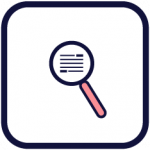Summary
The online environment affords us engaging new ways to evaluate our learners that go far beyond pen and paper assessments. Videos, infographics, websites, and other digital media provide insights into our learners’ creative thinking abilities and communication skills that cannot be discovered through traditional assessment strategies. You and your learners do not need to be artists, filmmakers, or web-designers to take advantage of the benefits of digital media assignments. Thoughtful assessment planning, clear instructions, and readily available support will ensure learners succeed at demonstrating their skills and creativity. Remember to explore the examples in the companion resource to this course and experiment with some of the digital media tools highlighted in this module.
Key Takeaways
- Digital media assignments develop learners’ digital fluency, information literacy, and communication skills and promote UDL principles.
- Select a media format (video, audio, infographic, or website) that measures the intended learning goals and aligns with an authentic career-related activity.
- Plan and design digital media assignments that support learners at each step and provide clear instructions, examples of final products, access to training, and constructive feedback.
- Develop an evaluation rubric with appropriate weight given to content, style, and technical execution as defined by the learning goals.

Explore Further
Buddle, C. (2013, June 19). Hear this! Podcasts as an assessment tool in higher education. Teaching for Learning @ McGill University.
Centre for Teaching Excellence. (n.d.) Examples of student ePortfolios. University of Waterloo.
Pratt, Y.P. (2019). Digital Storytelling in Indigenous Education: A Decolonizing Journey for a Métis Community (1st ed.). Routledge.
The Learning Portal. (2021, Sept.). The Digital Citizenship Hub.

References
CAST. (2018). Universal Design for Learning Guidelines version 2.2. http://udlguidelines.cast.org
Hawley, R., and Allen, C. (2018). Student-generated video creation for assessment: can it transform assessment within Higher Education? International Journal for Transformative Research. 5(1), pp.1-11. http://hdl.handle.net/10545/623845
International Society for Technology in Education (ISTE). (2016). ISTE Standards for Students. https://www.iste.org/standards/iste-standards-for-students
Lamb J. (2018). To Boldly Go: Feedback as Digital, Multimodal Dialogue. Multimodal Technologies and Interaction, 2(3), 49. https://doi.org/10.3390/mti2030049
Media Smarts. (n.d.). Digital Literacy Fundamentals. https://mediasmarts.ca/digital-media-literacy/general-information/digital-media-literacy-fundamentals
Sankey, M., Birch, D. & Gardiner, M. (2010). Engaging students through multimodal learning environments: The journey continues. In C.H. Steel, M.J. Keppell, P. Gerbic & S. Housego (Eds.), Curriculum, technology & transformation for an unknown future. Proceedings ascilite Sydney 2010 (pp.852-863). [PDF] http://ascilite.org.au/conferences/sydney10/procs/Sankey-full.pdf

